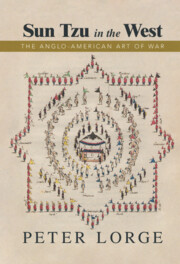Book contents
- Sun Tzu in the West
- Sun Tzu in the West
- Copyright page
- Contents
- Figures
- Acknowledgments
- Introduction
- 1 A Brief History of Sunzi in China
- 2 Journey to the West
- 3 The Armchair Captain
- 4 Stilwell, Chiang Kai-shek, and World War II
- 5 The China Marines
- 6 The Captain Who Taught a General
- 7 “The Concentrated Essence of Wisdom on the Conduct of War”
- 8 The Reaction to Griffith’s Sunzi Translation
- 9 Robert Asprey, John Boyd, and Sunzi
- Conclusion
- Bibliography
- Index
Conclusion
Published online by Cambridge University Press: 03 November 2022
- Sun Tzu in the West
- Sun Tzu in the West
- Copyright page
- Contents
- Figures
- Acknowledgments
- Introduction
- 1 A Brief History of Sunzi in China
- 2 Journey to the West
- 3 The Armchair Captain
- 4 Stilwell, Chiang Kai-shek, and World War II
- 5 The China Marines
- 6 The Captain Who Taught a General
- 7 “The Concentrated Essence of Wisdom on the Conduct of War”
- 8 The Reaction to Griffith’s Sunzi Translation
- 9 Robert Asprey, John Boyd, and Sunzi
- Conclusion
- Bibliography
- Index
Summary
There are no Sunzi police to enforce an orthodox interpretation of The Art of War decided upon by an official Sunzi authority. But there was also no single author called Master Sun who wrote The Art of War with a unified, coherent meaning that could or can be uncovered or determined by careful study. Many hands wrote, compiled, and edited the work that would be attributed to the fictional Master Sun, and as a result it is complex, generally coherent, and displays several underlying lines of argument. The Art of War was interpreted differently by its many commentators starting in the third century CE and continuing to the present. Those interpretations were the product of their respective authors, and the times and places in which they wrote.
- Type
- Chapter
- Information
- Sun Tzu in the WestThe Anglo-American Art of War, pp. 215 - 220Publisher: Cambridge University PressPrint publication year: 2022

